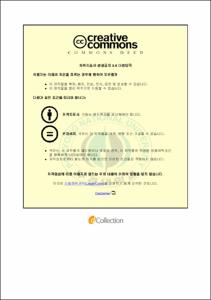DEA모형을 이용한 국가어항 효율성 분석 -시설면적 중심으로
- Abstract
- Except for the previous concept of fishing port as fundamental facility for fishing the concept of its utility facility for the nation is being added. Therefore, other than accommodating fishing boats for the purpose of anchoring, repairing, resting, and sheltering it is newly carrying out its roles of central facility for fishing village tourism, background park of fishing port, waterfront, marina, ocean information center, and fisheries resources control center as a place for national leisure. The national fishing ports are developed as fishery base for the safe fishing activities of fishing boats within the scope of influence as well as for the foreign fishing boats. In case of bad weather, by making it as a port of shelter for fishing boats, it is being developed for the purpose of guaranteeing safe fishing activities. This is production, sales, and processing base for marine products and at the same time, it is base facility for fishing industry for protecting life and property of fisherman.
The necessity of analyzing effectiveness of national fishing port business which is currently being implemented along with the changed demand such as decrease of fishing village population and restructuring of fishing industry has come to the fore. Still, development work of fishing port has not been completed yet but as a huge amount of budget is being invested if we analyze the economical feasibility or effectiveness of investment of fishing port development this will be a research which provides useful information for the more economical and effective implementation of the large amount of remaining business investment. This resulted in the need to have a solution for invigorating fishing industry. Thus, this research is carried out to regain low vigor of fishing port through effectiveness analysis of it as an advanced base of fishing industry. In this paper, it tries to study effectiveness of national fishing port and deduct its implications.
The analysis materials are statistical data of year 2011 and its effectiveness if measured by using DEA technique. Also, directions and targets for more effectively improving the operation of national fishing port were provided through rank sum test and t-test. DMU has selected 55 national fishing ports around the facility area out of 109 national fishing ports. For the input variables, total 5 are selected; full-time job population showing fishing industry population of fishing port, number of power fishing boats showing the current status of fishing boats, physical standard facility area of fishing port, area of functional facility, and are of convenience facility of the year. For the output variables, general variables of fishery production, product quantity and production amount are selected and analyzed. According to the analysis result there was an inefficiency cased by the excessive investment of input elements. It seems this is because the previous fishing port development was centered around the development of fundamental fishery facilities. In the future, through the development of additional functions such as functional enhancement of fishing industry and logistics, and tourism function there is a necessity to invest financial resources for the enhancement of function of fishing port.
- Issued Date
- 2013
- Awarded Date
- 2013. 8
- Type
- Dissertation
- Publisher
- 부경대학교
- Affiliation
- 대학원
- Department
- 대학원 자원경제학과
- Advisor
- 박철형
- Table Of Contents
- 제Ⅰ장 서 론 1
1. 연구 배경 및 목적 1
2. 연구내용 및 방법 2
3. 선행연구의 검토 2
제Ⅱ장 국가어항 개발사업 현황 6
1. 국가어항의 개념과 기능 6
가. 국가어항 개념 6
나. 국가어항의 기능 8
2. 국가어항 개발사업 현황 10
가. 국가어항 개발사업 10
나. 다기능어항 개발사업 11
제Ⅲ장 DEA모형을 이용한 효율성 분석 13
1. 효율성 개념 13
2. 효율성 측정방법 14
가. 투입지향 CCR모형 (Input Oriented CCR) 14
나. 투입지향 BCC모형 (Input Oriented BCC) 15
3. DEA 분석모형의 특징 17
제Ⅳ장 연구설계 및 분석결과 19
1. 연구설계 19
가. 변수의 선정 19
나. 표본의 선정 21
2. 분석결과 22
가. 투입물과 산출물의 상관계수 22
나. 투입물과 산출물의 기술통계량 23
다. 효율성 분석결과 24
1) CCR 및 BCC모형의 분석 24
2) CCR 및 BCC모형의 참조집합과 람다값 29
3) CCR 및 BCC모형의 준거집단과 참조횟수 30
4) CCR 및 BCC모형의 최적투입변수와 투입물 초과분 32
라. 효율성 개선 34
1) 효율성 개선을 위한 목표값 34
2) 투입요소의 감축량 36
3) DMU별 최적 투입·산출 수준 38
4) Wilcoxon 순위합검증 (Rank-sum Test) 39
5) 독립표본 t-검정(Independent sample t-test) 43
제Ⅴ장 결 론 47
1. 요약 및 시사점 47
2. 연구의 한계점 및 연구방향 49
참고문헌 51
부 표 53
- Degree
- Master
- Files in This Item:
-
-
Download
 DEA모형을 이용한 국가어항 효율성 분석 -시설면적 중심으로.pdf
기타 데이터 / 815.96 kB / Adobe PDF
DEA모형을 이용한 국가어항 효율성 분석 -시설면적 중심으로.pdf
기타 데이터 / 815.96 kB / Adobe PDF
-
Items in Repository are protected by copyright, with all rights reserved, unless otherwise indicated.